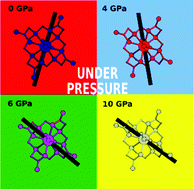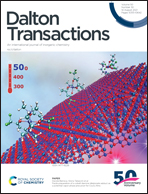Magnetic anisotropy on demand exploiting high-pressure as remote control: an ab initio proof of concept†
Abstract
Lanthanide based single molecule magnets have recently become very promising systems for creating single molecule devices working at high temperatures (nitrogen boiling temperature). However, the variation of the direction of the anisotropy tensor as a function of the applied pressure still represents a quite unexplored field. Application of external pressure can be a promising method toward neat control of magnetic anisotropy and relaxation processes in the bulk phase. Required criteria for being eligible for such systems are as follows: the presence of first excited energy levels with significantly different orientations of its anisotropy tensor; sufficiently low energies of such levels so that they can mix with the ground state; and the possibility of tuning their energies by small geometrical perturbations. The archetype compound {Na[DyDOTA(H2O)]·4H2O} (1) (H4DOTA = 1,4,7,10-tetraazacyclododecane-1,4,7,10-N,N′,N′′,N′′′-tetraacetic acid) fulfils all such criteria. A state-of-the-art in silico proof of concept study on the possibility of controlling the orientation of the anisotropy tensor as a function of pressure in [DyDOTA(H2O)]− by inducing different apical water molecule (AWM) orientations and/or DOTA-induced crystal field is presented.

- This article is part of the themed collection: Spotlight Collection: Lanthanide and transition metal complexes as molecular magnets


 Please wait while we load your content...
Please wait while we load your content...